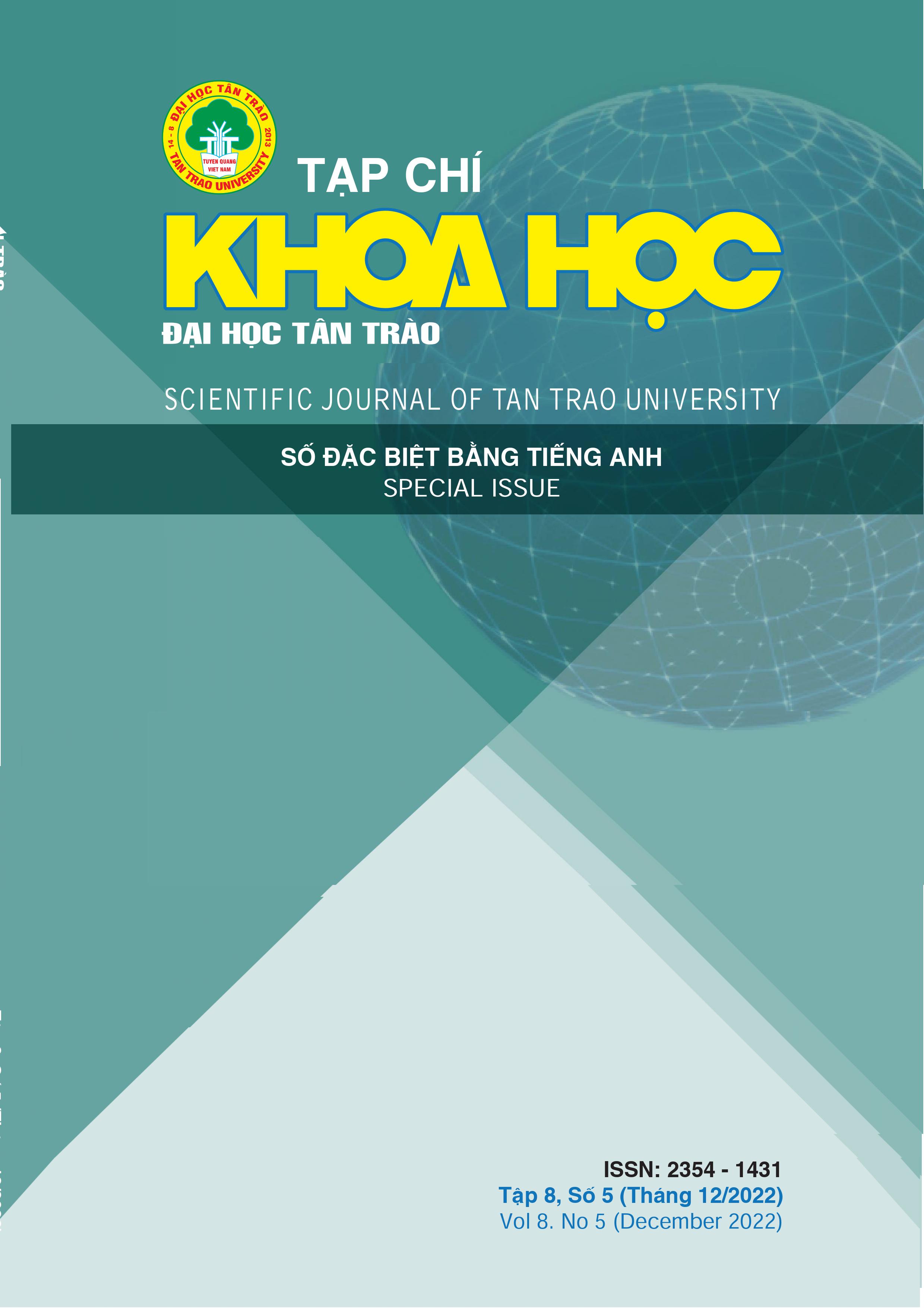ISOLATION AND SCREENING OF INDIGENOUS MICROORGANISMS CAPABLE OF DEGRADING CELLULOSE TO TREAT HEMP HURD IN THANH HOA PROVINCE
DOI:
https://doi.org/10.51453/2354-1431/2022/876Keywords:
Hemp Hurd Isolation Screening Degrading cellulose MicroorganismsAbstract
Hemp Hurd has not yet found an optimal treatment method, therefore, in this paper, we isolated and screened native microorganisms with high cellulose-degradation capability for potentially effective treatment. Native microorganisms were isolated on Gauze I and Hans, media then CMC-as activity was determined. Next, the species names of screening microorganisms were determined by total DNA isolation, PCR and Sequencing. The results showed that 02 bacterial strains and 06 actinomycete strains were selected from 32 isolates. Then, we optimized the growing conditions of the screened microorganisms. Among actinomycetes strains PU1.1, PU2.1 gave the highest weight loss results, therefore they were selected for further study. Our results showed that TG2.1 and CM4.1 are Bacillus subtilis. PU1.1 is Streptomyces lilacs, while PU1.2 is Streptomyces Misiones. The selected microorganisms belong to risk group level 1 (safety group). Thus, these strains can be used for further experiments in the research and production of microorganism-derived bio-products to treat hemp hurd in Thanh Hoa province.
Downloads
References
REFERENCES
1]. B. C. Behera, S. Parida, S. K. Dutta, and H. Thatoi, “Isolation and Identification of Cellulose Degrading Bacteria from Mangrove Soil of Mahanadi River Delta and Their Cellulase Production Ability,” American Journal of Microbiological Research, vol. 2, pp. 41–46, 2014.
[2]. S. Flimban, SE. Oh, J. H. Joo, and K. A. Hussein, “Characterization and Identification of Cellulose-degrading Bacteria Isolated from a Microbial Fuel Cell Reactor,” Biotechnology and Bioprocess Engineering, vol. 24, pp. 622–631, 2019.
[3]. FNCA Biofertilizer Project Group, “Biofertilizer Manual,” 2006.
[4]. J. G. Holt, Bergey’s Manual of Determinative Bacteriology, 9th ed. Williams & Wilkins., 1994
[5]. T. T. N. Nguyen, Q. N. Pham, X. P. Le, Q. T. Pham, and M. C. Nguyen, "Isolating And Screening Micro-Organisms Highly Disolveable Xenlulo And Compatible With Eroded Soils, Charactering Their Physiologies/Biology To Produce Bio-Fertilizer For Forest Trees," Vietnam Journal of Forest Science, vol. 2, 2015.
[6]. J. Sambrook and D. W. Russell, Molecular cloning: A laboratory manual, 2nd ed., vol. 3. Cold Spring Harbor Laboratory Press, 2001
[7]. A.Singh and K. Hayashi, “Microbial cellulases: protein architecture, molecular properties, and biosynthesis,” Advances in Applied Microbiology, vol. 40, pp. 1–44, 1995.
[8]. J. T. Staley, M. P. Bryant, N. Pfennig, and J. G. Holt, Bergey’s Manual® of Systematic Bacteriology, 1st ed., vol. 3. Williams & Wilkins, 1989.
[9]. T. A. T. Tran, T. N. S. Tran, N. N. Nguyen, and H. M. Luu, "Influence of composted rice straw treated by Trichoderma sp, fungi on rice yield, rice soil fertility and economic effectiveness in summer-autumn 2010 in the Mekong Delta," Science and Technology Journal of Agriculture and Rural Development, pp. 37–44, 2011.
[10]. TCVN 12104:2018: Cellulose microorganism - Determination of cellulase activity.
[11]. V. P. Q. Vo and N. D. Cao, “Isolation and identification of cellulolytic bacteria,” Can Tho University Journal of Science, vol. 18a, pp. 177–184, 2011.
[12]. S. A. Waksman, The actinomycetes, vol. 2. Williams & Wilkins, 1961.
[13]. N.W. Schaad, J. B. Jones, and W. Chun (2002). Laboratory guide for identification plant pathogenic bacteria. Third Edition. The American Phytopathological Society.
[14]. G. Williams, “Staining reactions for the dẹlection of humiccl,” FEMS Microbiology Letters, vol. 20, pp. 253–258, 1983.
Downloads
Published
How to Cite
Issue
Section
License

This work is licensed under a Creative Commons Attribution-ShareAlike 4.0 International License.
All articles published in SJTTU are licensed under a Creative Commons Attribution-ShareAlike 4.0 International (CC BY-SA) license. This means anyone is free to copy, transform, or redistribute articles for any lawful purpose in any medium, provided they give appropriate attribution to the original author(s) and SJTTU, link to the license, indicate if changes were made, and redistribute any derivative work under the same license.
Copyright on articles is retained by the respective author(s), without restrictions. A non-exclusive license is granted to SJTTU to publish the article and identify itself as its original publisher, along with the commercial right to include the article in a hardcopy issue for sale to libraries and individuals.
Although the conditions of the CC BY-SA license don't apply to authors (as the copyright holder of your article, you have no restrictions on your rights), by submitting to SJTTU, authors recognize the rights of readers, and must grant any third party the right to use their article to the extent provided by the license.


